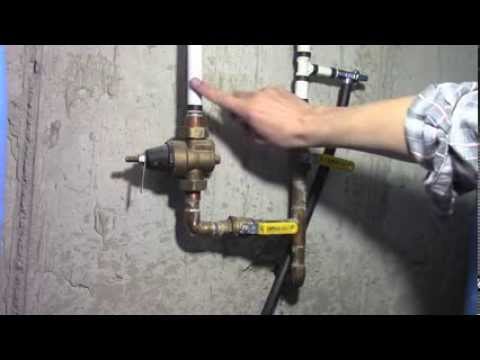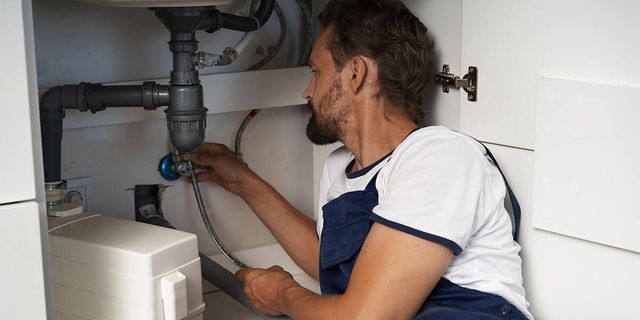Verified Methods for Resolving Low Water Pressure in Your Home
Verified Methods for Resolving Low Water Pressure in Your Home
Blog Article
Just about every person maintains their unique opinion on the subject of 4 Ways to Troubleshoot Low Water Pressure.

Low tide stress in your house can be an aggravating issue, impacting every little thing from bathing to cleaning meals. If you're experiencing weak water flow, there are several feasible reasons and options to check out. In this guide, we'll discuss typical reasons for low tide pressure and functional actions to resolve the problem properly.
Intro to Low Tide Pressure
Low tide stress happens when the circulation of water from your faucets, showers, and various other components is weak than normal. This can make everyday tasks much more difficult and much less efficient. Comprehending the causes of low water pressure is critical to finding the ideal solution.
Common Reasons For Low Water Pressure
Faulty Stress Regulatory Authorities
Stress regulators are in charge of preserving consistent water stress in your home. If they malfunction, it can lead to low water pressure or uneven flow throughout your home.
Local Water Issues
Sometimes, the trouble lies outside your home. Municipal water problems, such as main line leakages or upkeep job, can briefly reduce water pressure in your location.
Pipeline Obstructions
In time, pipes can end up being obstructed with natural resource, debris, or particles, restricting the flow of water. This is a typical issue in older homes with galvanized steel pipelines.
Rust
Rust within pipes can cause leaks and minimized water pressure. Rust accumulation can restrict water flow, especially in maturing plumbing systems.
Exactly How to Diagnose Low Tide Pressure
Inspecting Pipelines
Examine noticeable pipes for indications of leakages, rust, or clogs. Pay attention to any type of uncommon sounds, such as banging or rattling pipes, which might suggest concerns within the plumbing system.
Consulting with a Plumber
If you're not able to pinpoint the cause of low tide stress, take into consideration hiring a professional plumber to conduct an extensive examination. They can recognize underlying concerns and recommend suitable remedies.
Checking Taps and Components
Start by testing the water pressure at various faucets and fixtures throughout your home. If the concern is isolated to particular areas, it might indicate local issues.
Do It Yourself Solutions to Repair Low Tide Stress
Flushing Water Heater
Debris buildup in the hot water heater can restrict flow and reduce effectiveness. Purging the storage tank regularly aids eliminate sediment and keep optimal performance.
Inspecting Stress Regulatory Authority
Guarantee that the stress regulator is working appropriately. Readjusting or changing the regulatory authority can assist bring back correct water stress throughout your home.
Cleansing Aerators and Showerheads
Natural resources can collect in aerators and showerheads, reducing water flow. Get rid of and cleanse these components regularly to improve water stress.
Cleaning Clogs in Piping
For minor obstructions, attempt using a plumbing serpent or chemical drain cleaner to clear blockages in pipelines. Be cautious when making use of chemicals and follow safety and security guidelines.
When to Call a Specialist Plumber
If DIY efforts stop working to solve the issue or if you think substantial plumbing troubles, it's best to look for aid from an accredited plumber. They have the proficiency and devices to address intricate concerns safely and effectively.
Safety Nets to Preserve Water Pressure
Installing a Stress Booster
Take into consideration mounting a pressure booster pump to enhance water pressure in locations with continually low circulation. This can be especially valuable for multi-story homes or properties with high-demand fixtures.
Surveillance Water Usage
Be mindful of water use routines and stay clear of ill-using the plumbing system. Easy adjustments, such as staggering showers and laundry loads, can help maintain appropriate water pressure.
Regular Upkeep
Arrange routine maintenance for your plumbing system to stop issues such as corrosion, leaks, and blockages. Resolving small issues early can assist avoid even more substantial repairs later on.
Verdict
Handling low tide stress can be irritating, however identifying the underlying reasons and executing ideal remedies can restore ideal circulation throughout your home. Whether it's cleaning up aerators, inspecting pipes, or speaking with a plumber, taking positive steps can ensure a consistent supply of water for your day-to-day needs.
FOUR WAYS TO FIX LOW WATER PRESSURE NOW
Turning on a shower or faucet only to find the water comes out in a sad, slow drizzle is never a good feeling. How exactly are you supposed to wash a pan or take a quick shower when it takes 10 minutes just to rinse off a little soap? The good news is that when your water pressure is bad, there's always a cause: typically one that can be easily fixed. Here are some of the most common causes of low pressure and what you can do to fix the issue:
DEBRIS AND MINERAL DEPOSIT BUILDUPS
If you notice low water pressure from just one or two of the fixtures in your house, the problem likely has to do with debris buildup. Water is full of minerals and other debris, all of which can accumulate in your pipes and on your fixtures. This can cause a blockage that affects how much water flows through. To fix this, try filling a small plastic bag with white vinegar, and use a rubber band to hang it around your showerhead or faucet. Let the head of the fixture soak for a few hours, and the vinegar should loosen the deposits.
WATER LEAKS
Leaks are another common cause of low water pressure. If water is flowing out of your plumbing through a hole or crack before it can reach your fixture, the pressure coming out of the faucet or showerhead will be lower. A plumbing professional is your best bet for finding and repairing a leak in your water supply pipes.
Leaks are another common cause of low water pressure. If water is flowing out of your plumbing through a hole or crack before it can reach your fixture, the pressure coming out of the faucet or showerhead will be lower. A plumbing professional is your best bet for finding and repairing a leak in your water supply pipes.
A VALVE ISSUE
If you have low water pressure throughout your home, check your main shut-off valve to make sure it's completely open. You may also want to see if there's a pressure-reducing valve installed. If there is, have a plumber help you adjust the settings to get the pressure you're looking for.
OTHERS USING WATER
Believe it or not, your low water pressure could be caused by your neighbors. If you notice low pressure at certain times of day, it may be because you and the people living next to you have similar schedules - when everyone is showering at the same time, the pressure will be lower in every home. Low pressure throughout the neighborhood may also be caused by an issue with your municipal water supply. If that's the case, call the supplier to see if they're working on the issue.
https://www.rotorooter.com/blog/water-leaking/low-water-pressure-fixes/

I hope you liked our part about 9 Reasons for Low Water Pressure in Your House. Many thanks for spending some time to read our post. Sharing is caring. Who knows, you may be helping someone out. Thank-you for taking the time to read it.
Visit Website Report this page